Desolation and hunger in Caracas’ once-renowned zoo
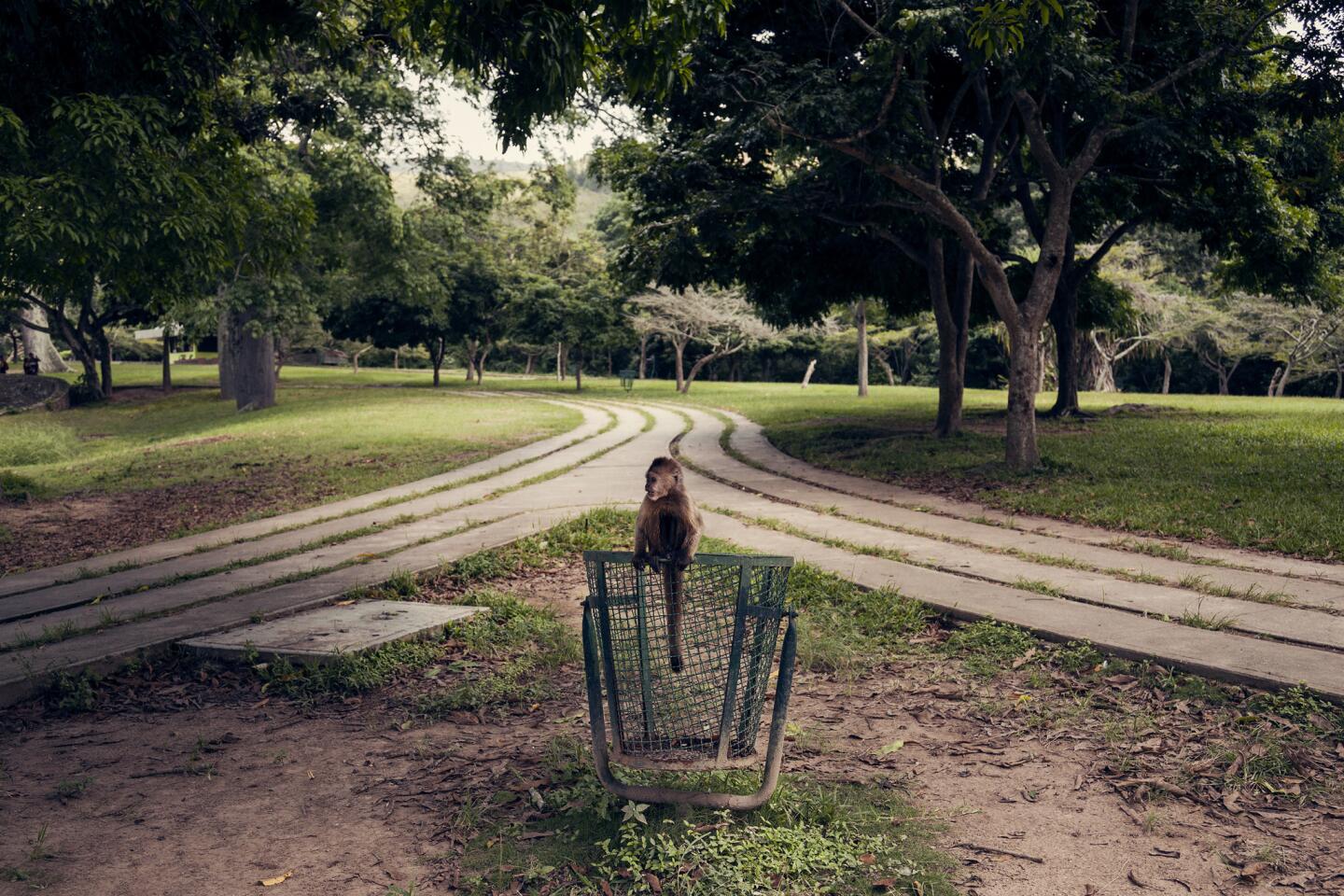
A monkey uses a trash can as a perch in the Caricuao zoo on July 12, 2017. It scavenged around before following a family that was having lunch. In the zoo, attendance is at an all-time low and kiosks don’t open until lunch because ticket sales are so low.
(Adriana Loureiro Fernandez / For The Times)The Caricuao zoo in Caracas, Venezuela, has become a living symbol of Venezuela’s collapsed economy and political chaos. Over 11 years, 550 animals have died or disappeared, including a prized leopard.
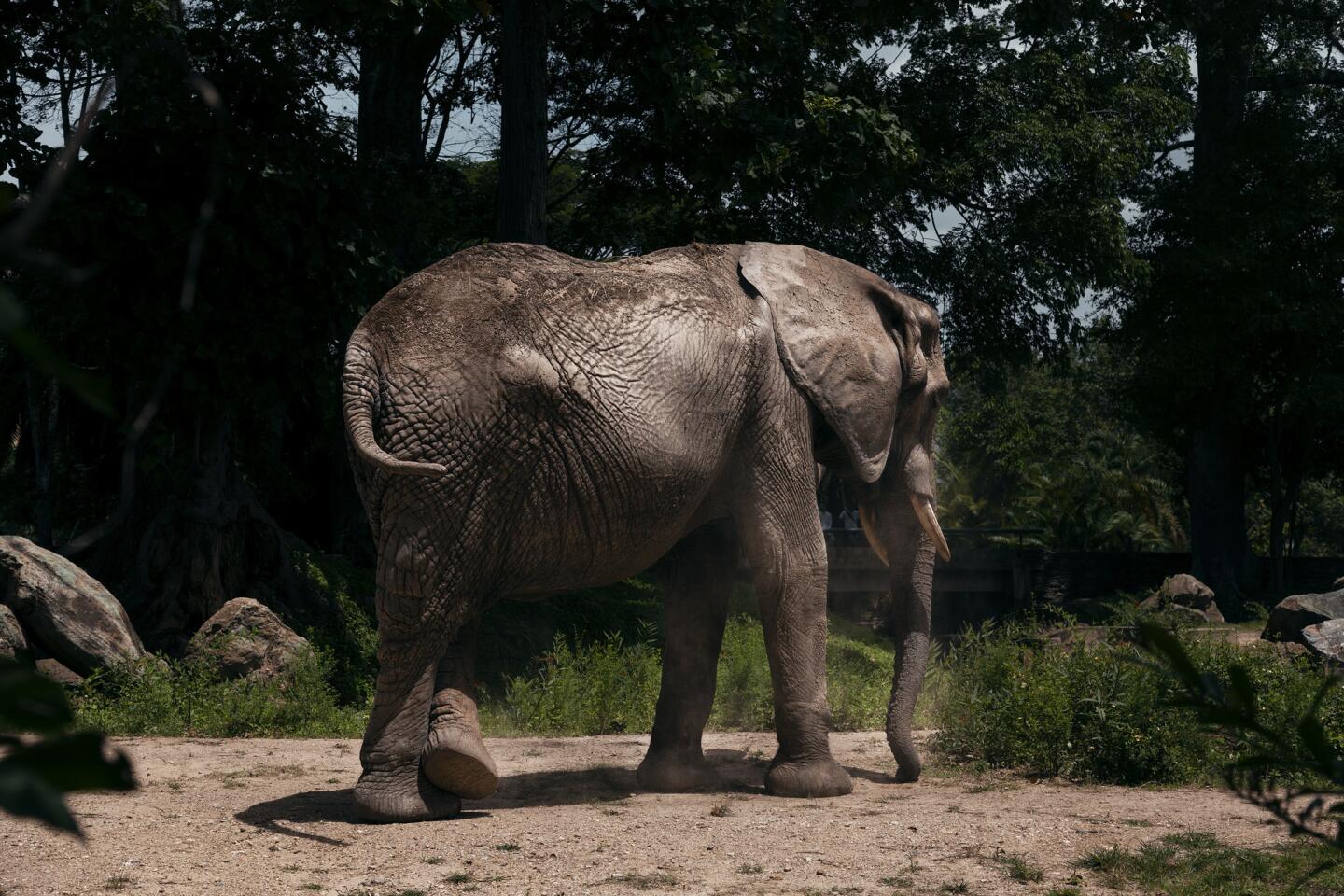
Ruperta the elephant eats dry grass. In late May, she got sick after being fed pumpkin exclusively for an extended period of time.
(Adriana Loureiro Fernandez / For The Times)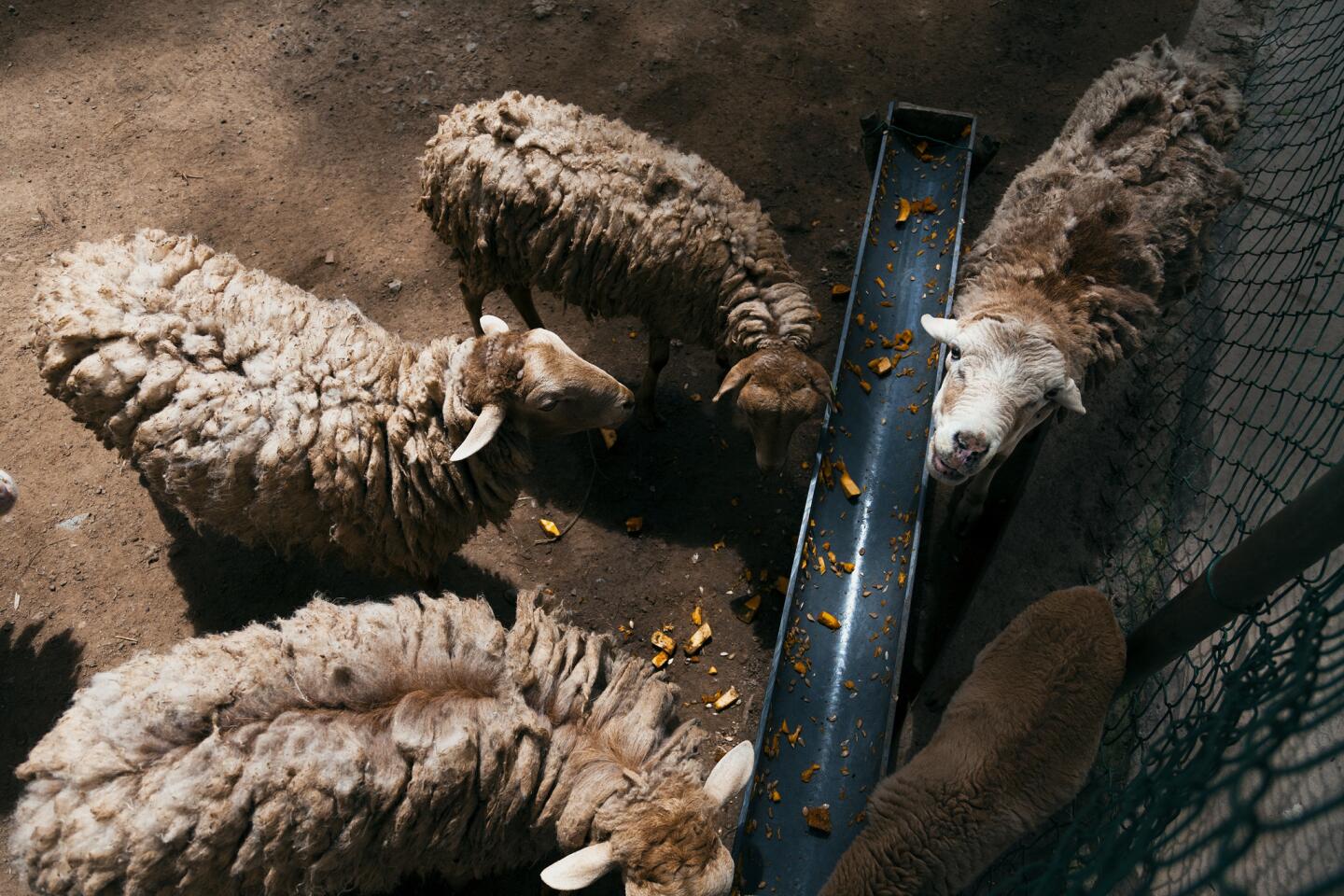
In the “contact” area of the Caricuao zoo, sheep finish eating more than 6 1/2 pounds of pumpkin.
(Adriana Loureiro Fernandez / For The Times)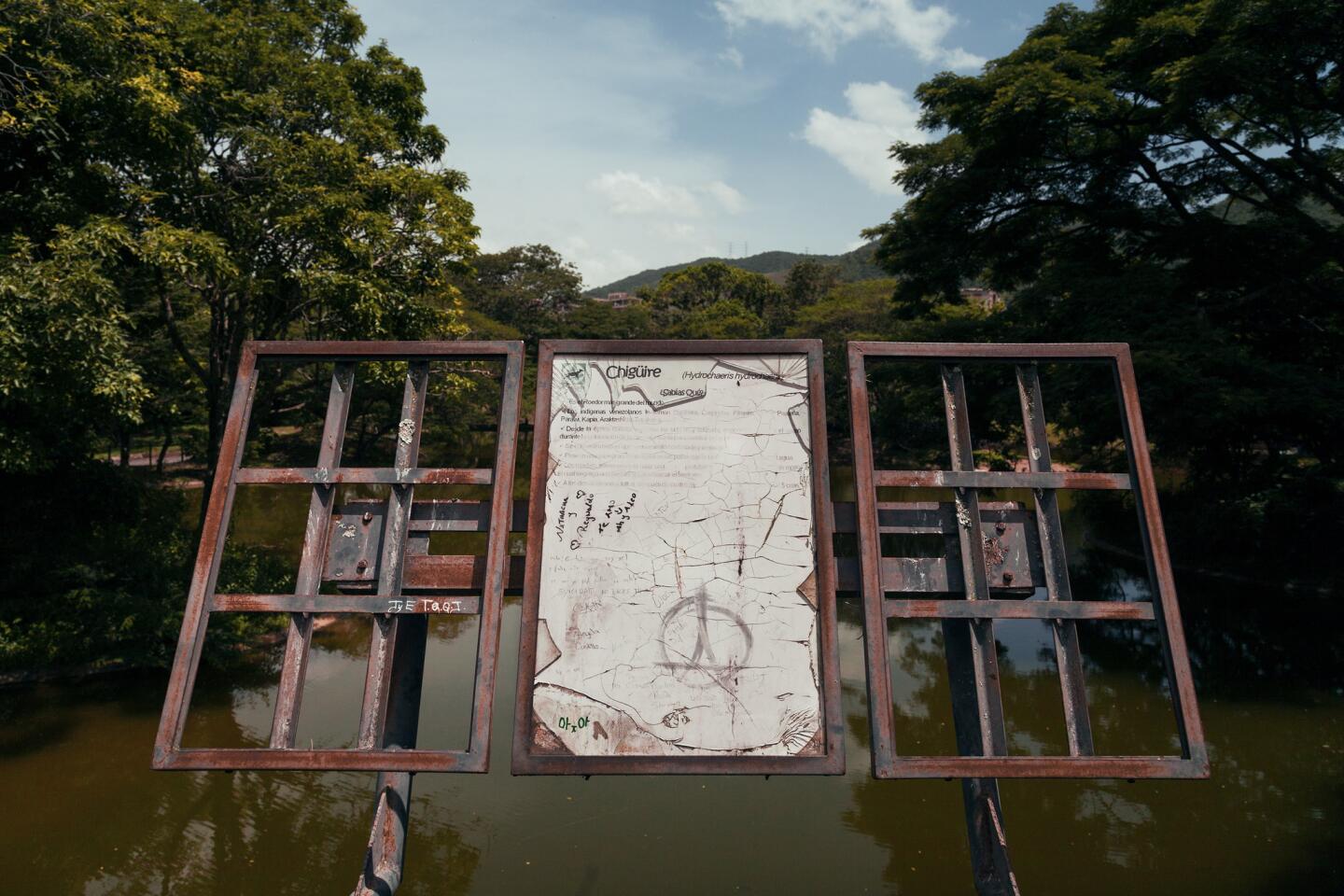
A vandalized and rusty sign indicates the place where capybaras use to be in the Caricuao zoo. The rodent is a popular source of meat in Venezuelan cuisine. In previous years, the animal was stolen from the zoo, presumably for food.
(Adriana Loureiro Fernandez / For The Times)Advertisement
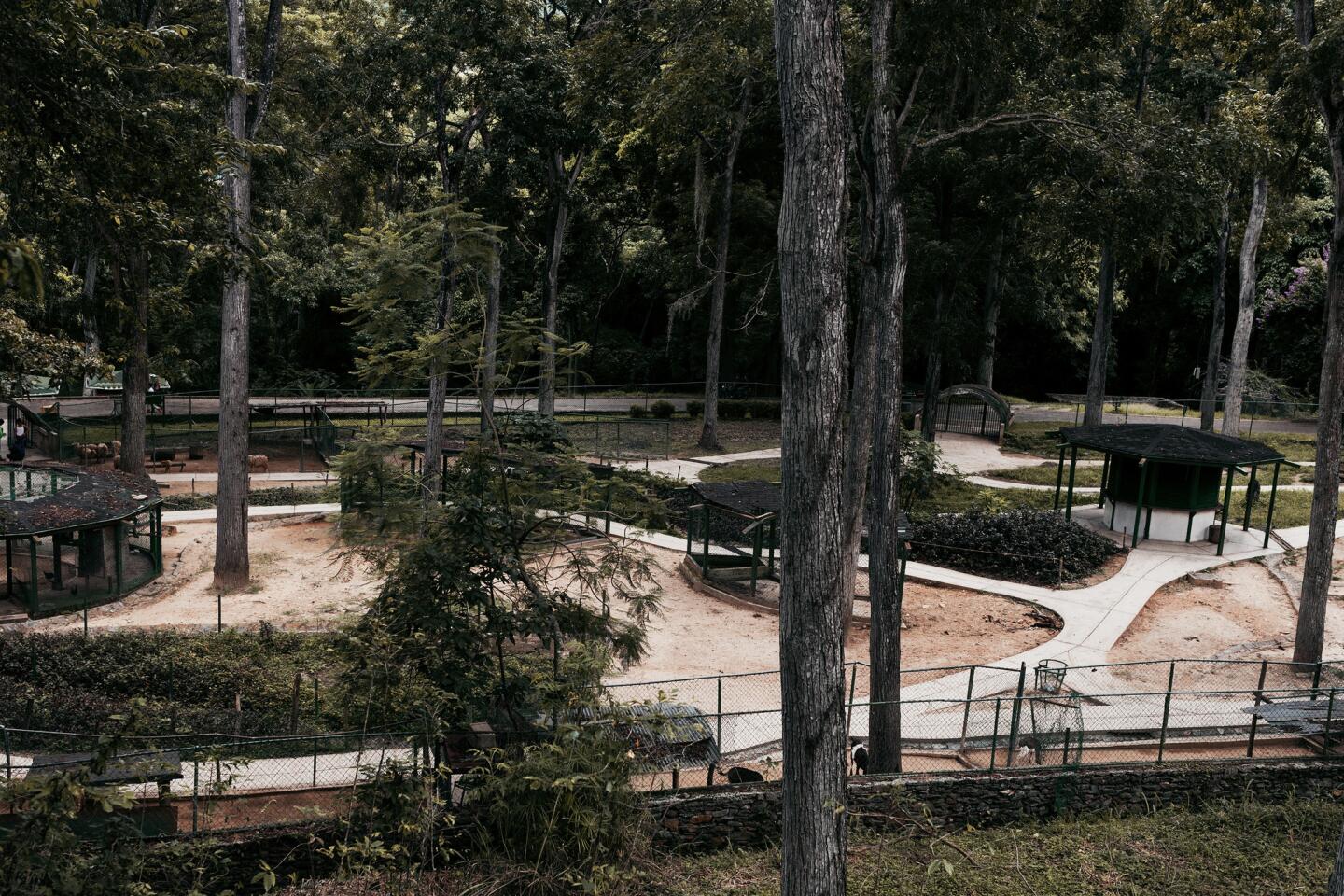
The “contact” area of the Caricuao zoo, in the afternoon. Most areas of the zoo are empty, even though the entrance fee is just one cent.
(Adriana Loureiro Fernandez / For The Times)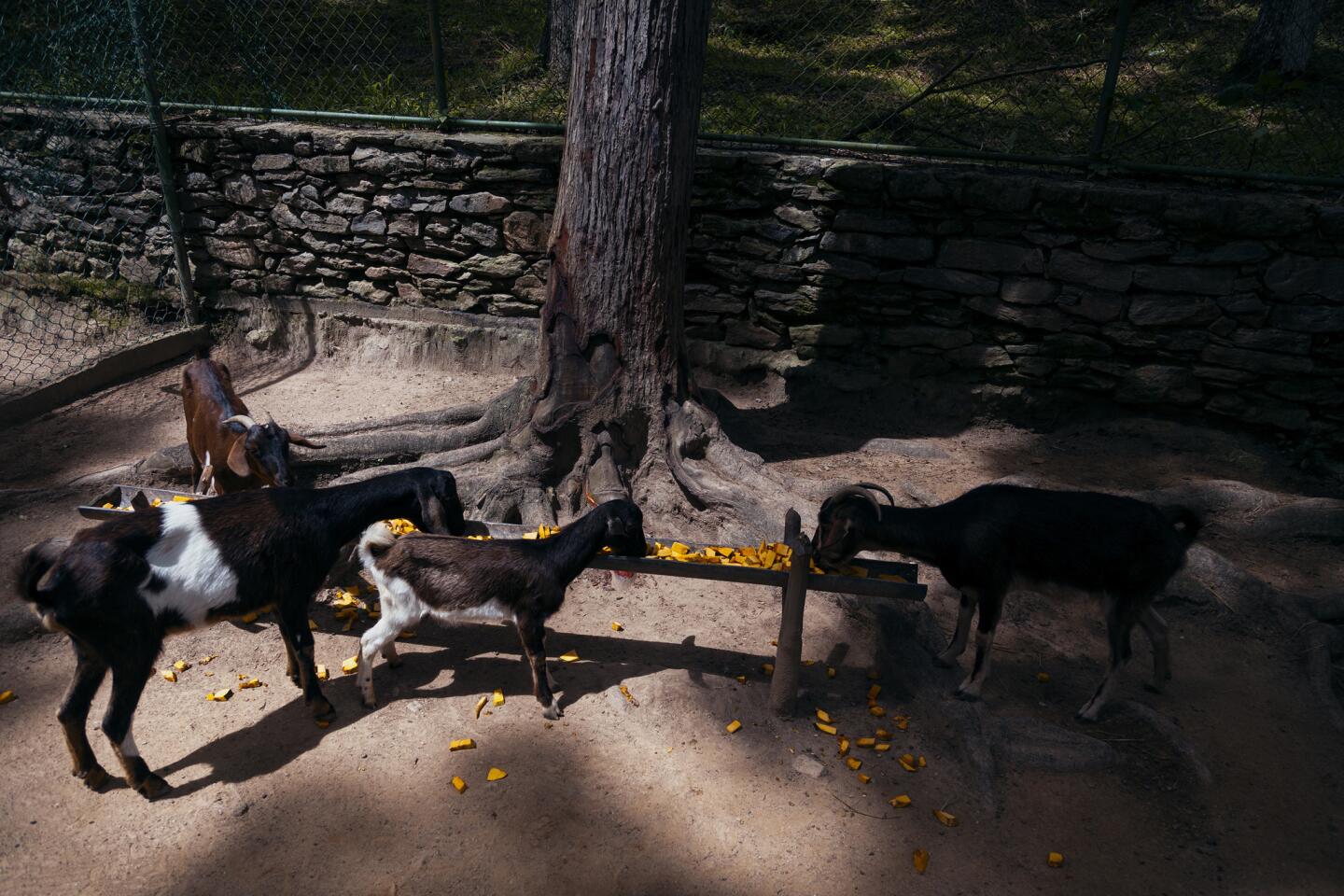
Goats feast on pumpkin at the zoo.
(Adriana Loureiro Fernandez / For The Times)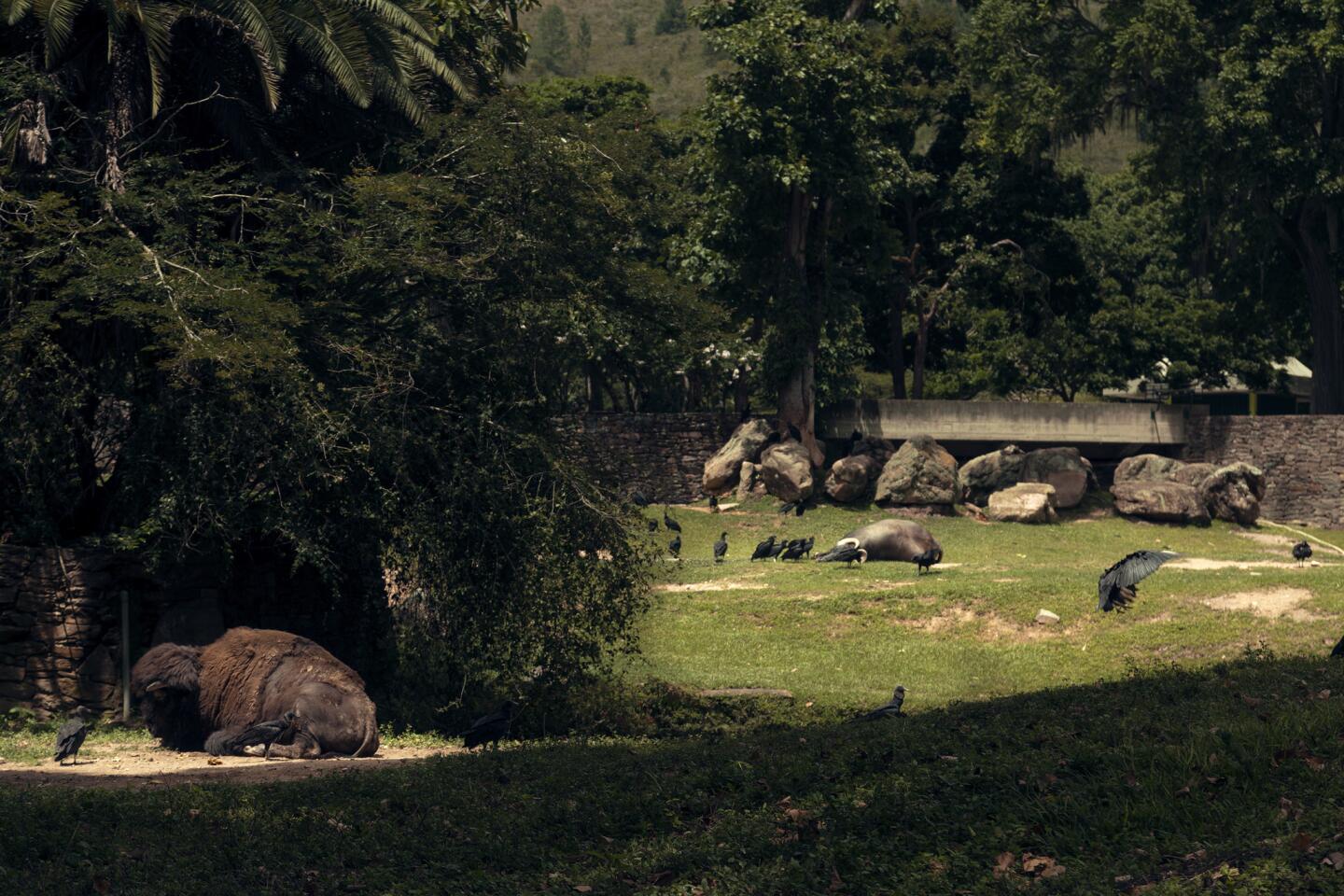
A bison and a bull are surrounded by vultures at the Caricuao zoo.
(Adriana Loureiro Fernandez / For The Times)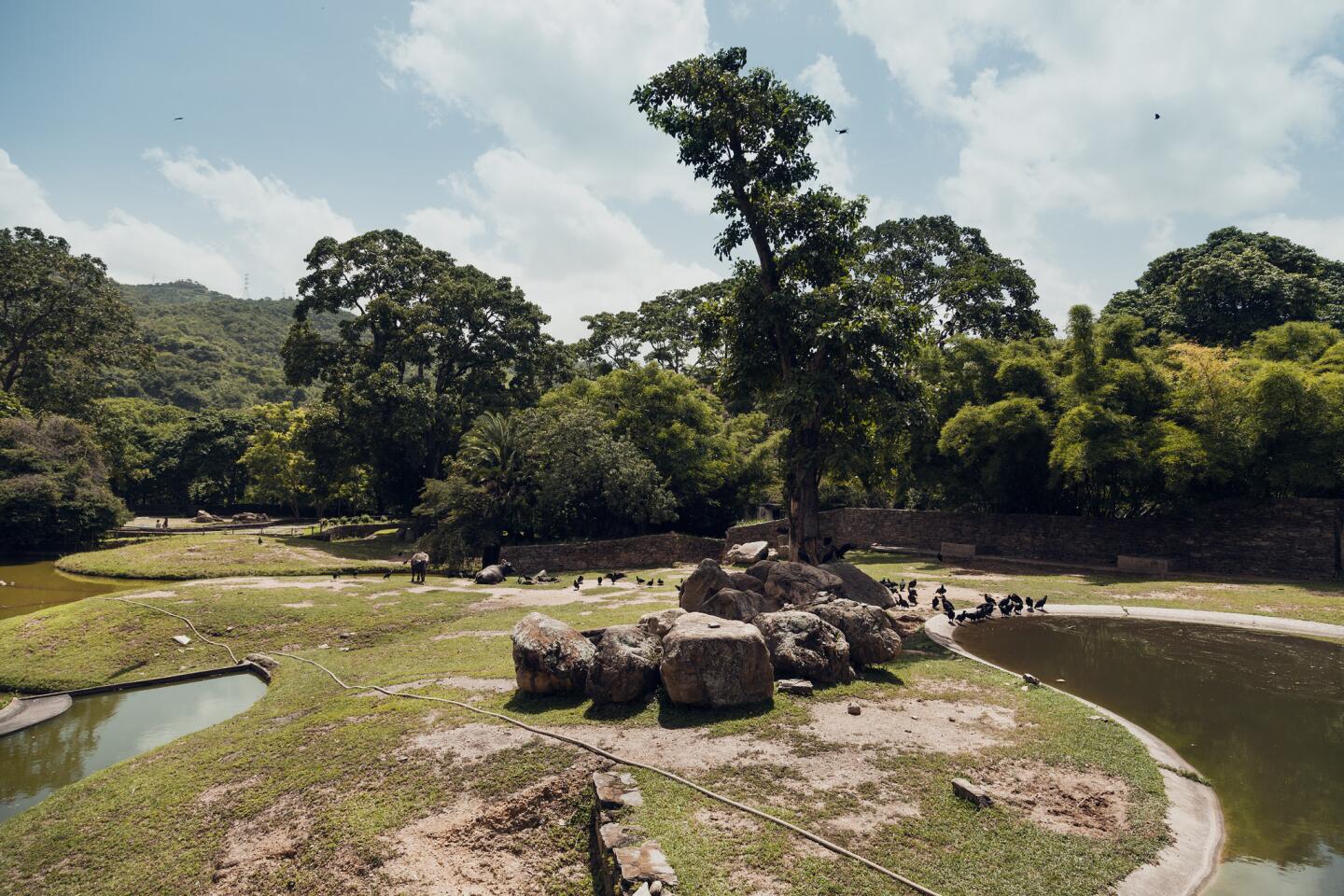
Throughout the park, water looks green and slimy. Vultures often drink water from the ponds near dying animals.
(Adriana Loureiro Fernandez / For The Times)Advertisement
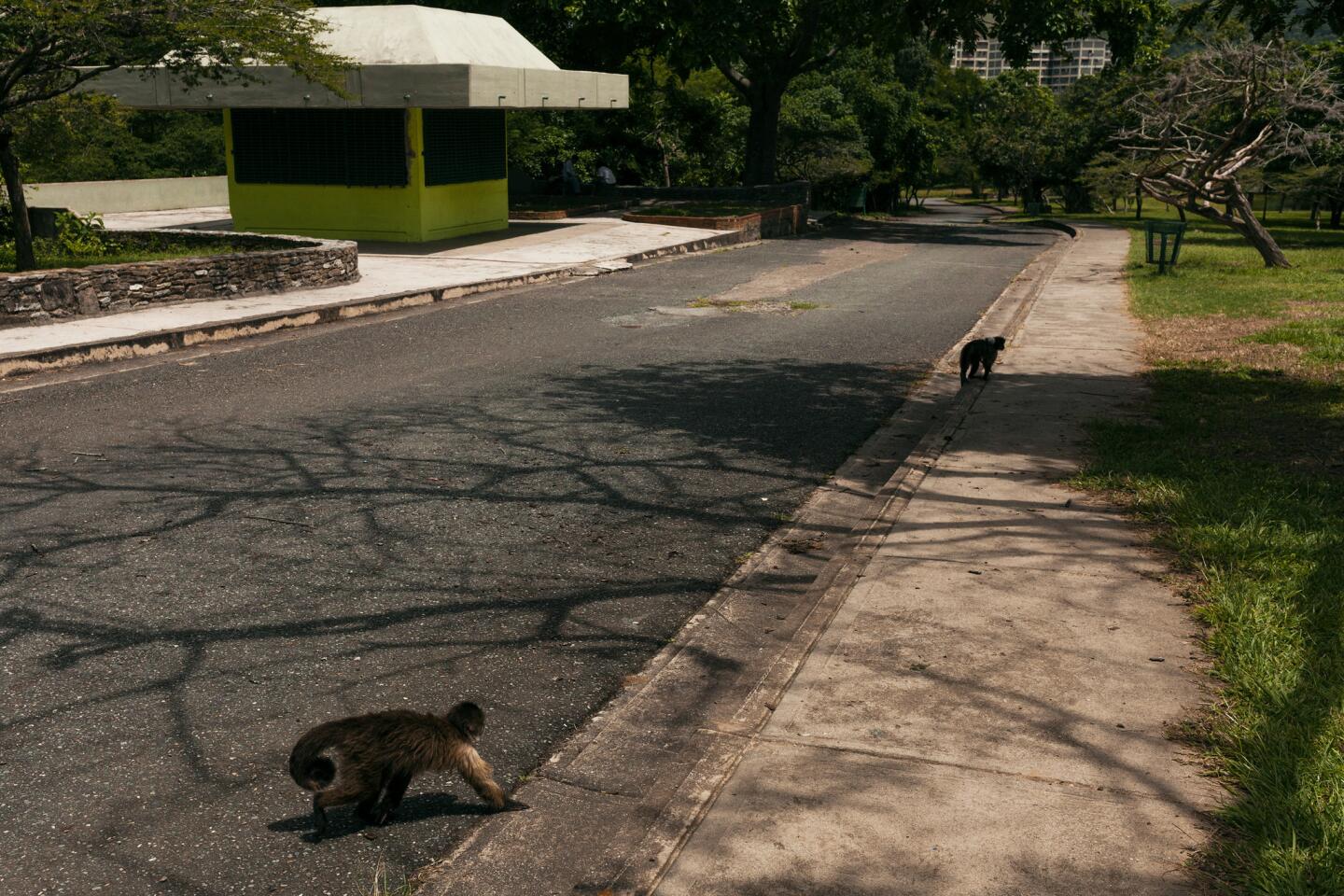
Two monkeys roam the Caricuao zoo. There are dozens of loose monkeys in the park that gather around people bearing food.
(Adriana Loureiro Fernandez / For The Times)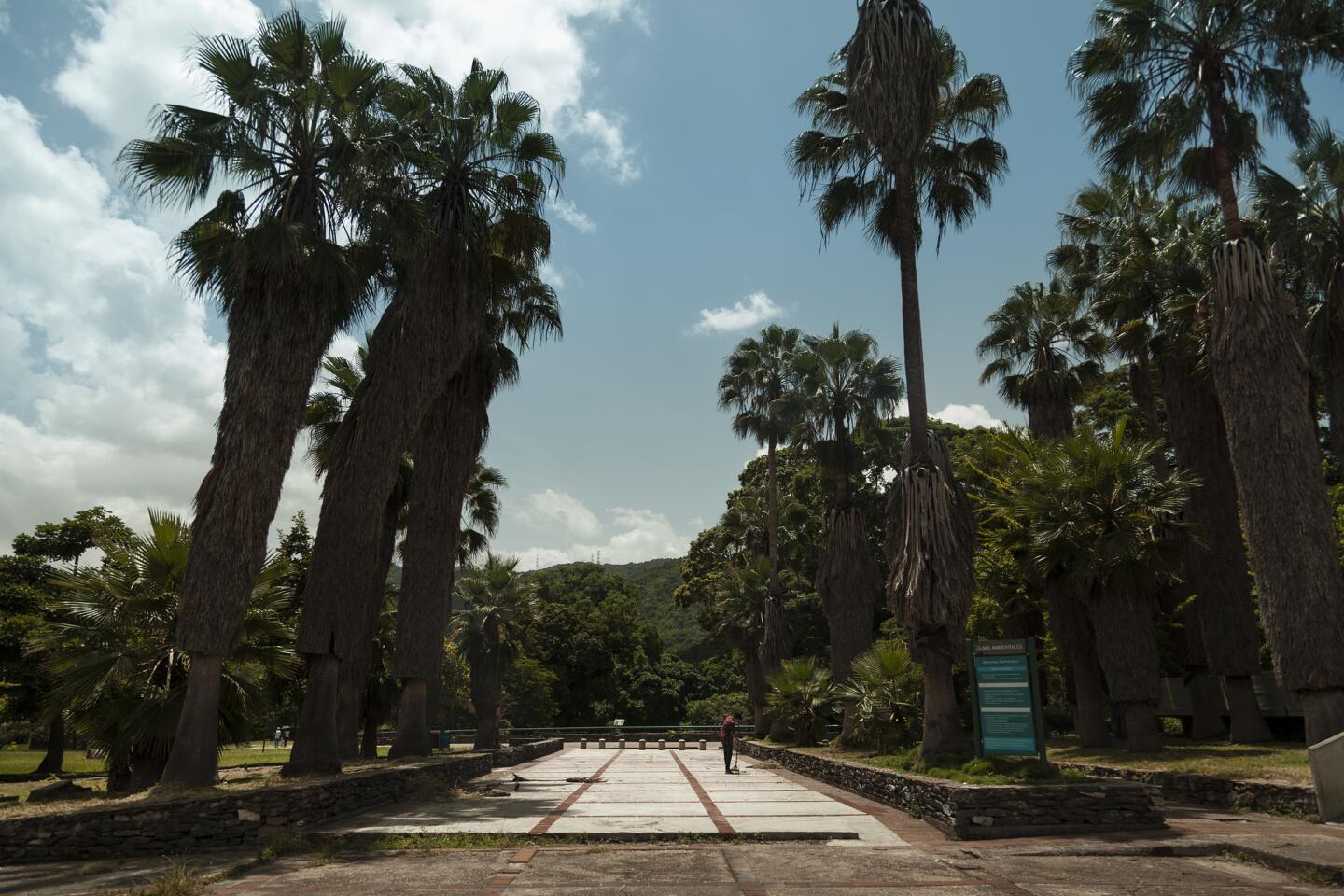
The entrance of the Caricuao zoo in Caracas. Summer break has not brought increased attendance at the zoo.
(Adriana Loureiro Fernandez / For The Times)







